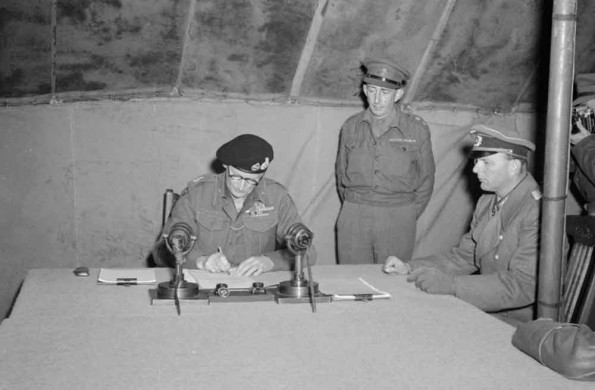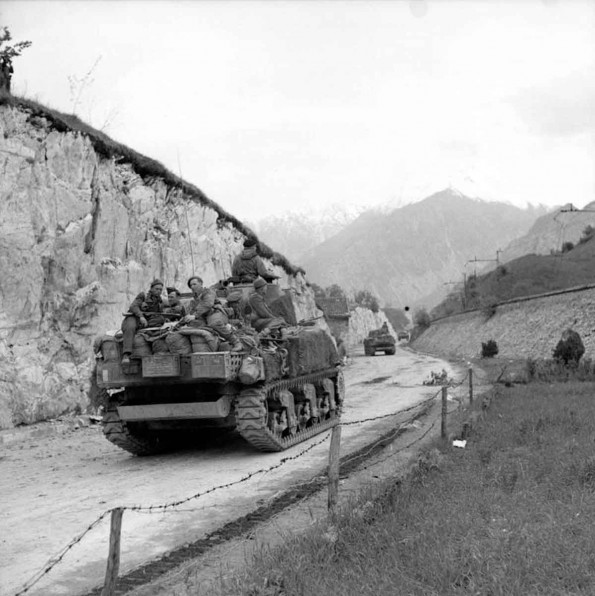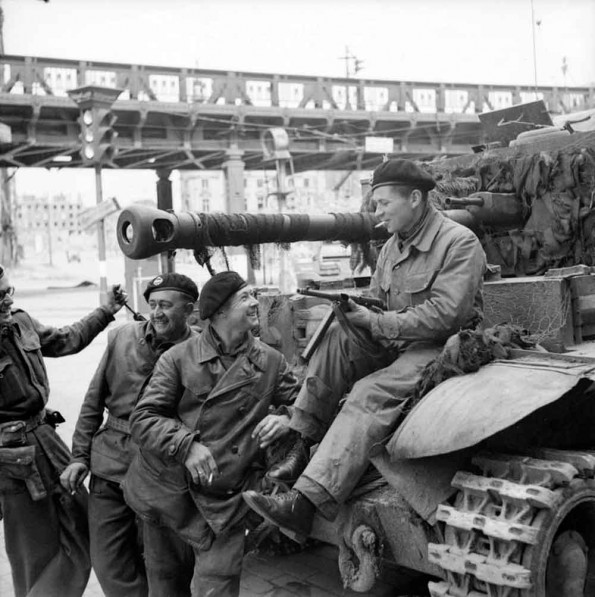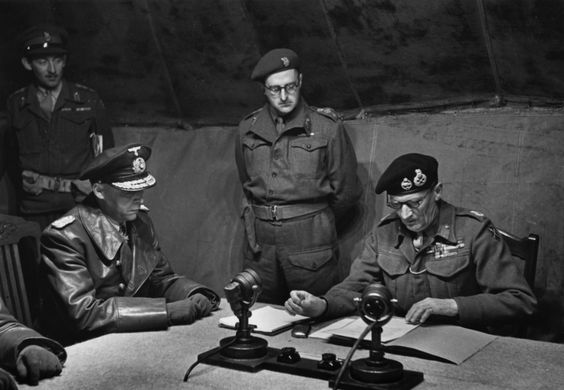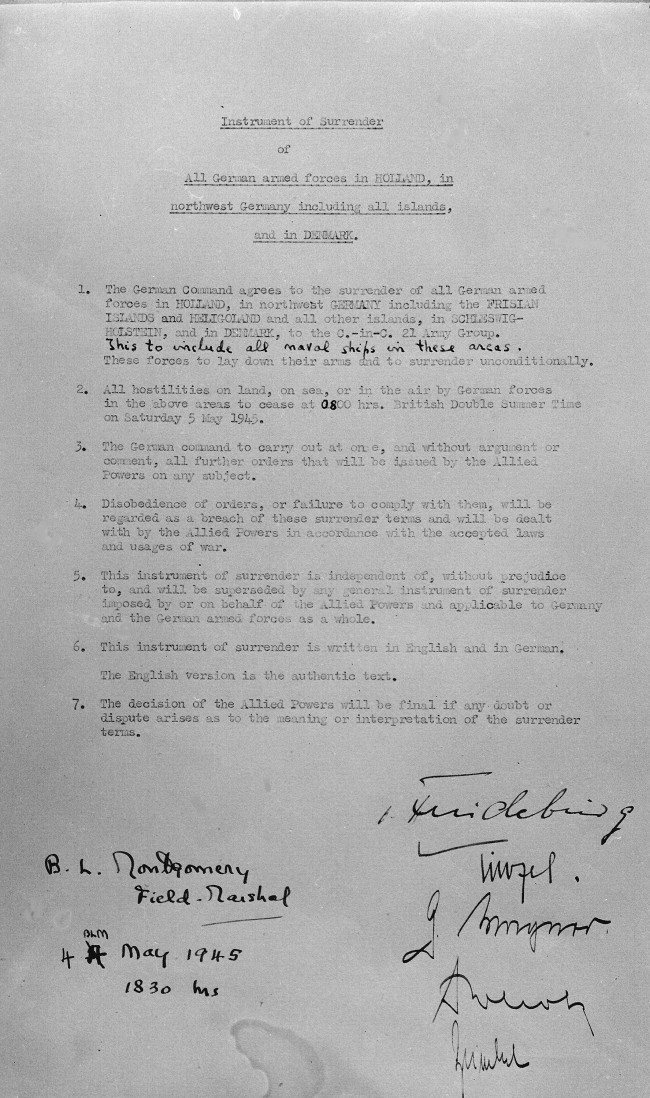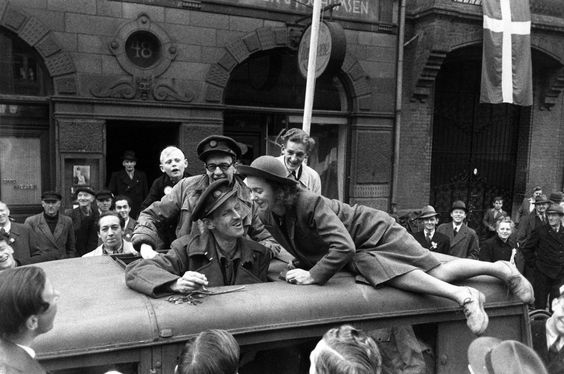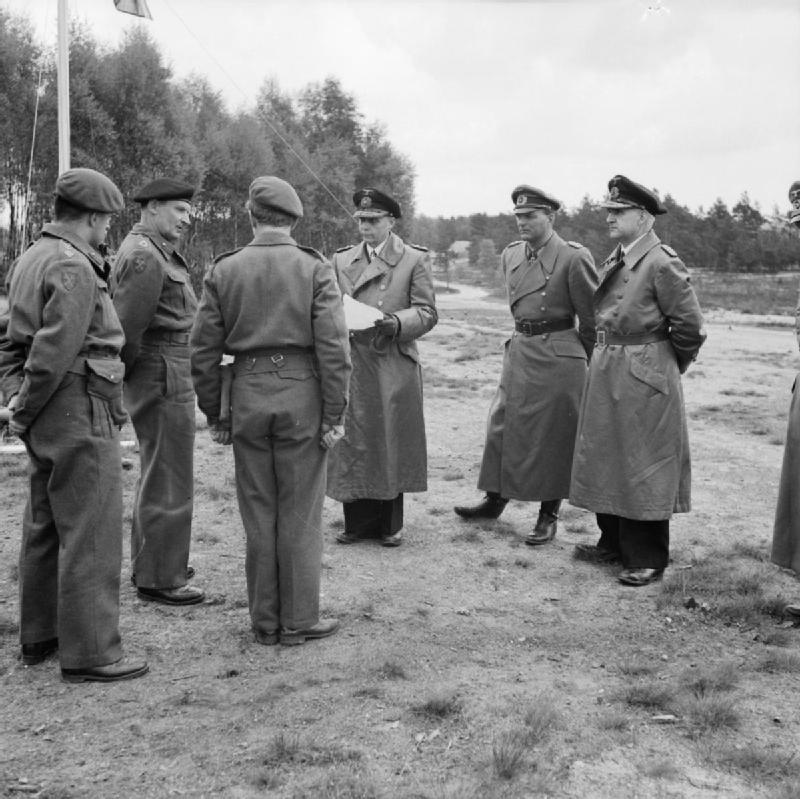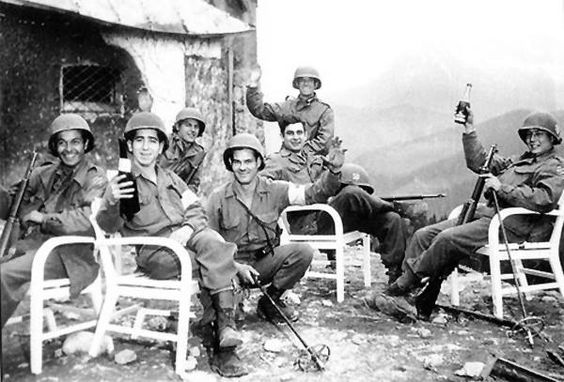Air Operations, CBI
CHINA- 12 341st Medium Bomb Group B-25s and more than 180 14th Air Force fighter-bombers, operating in flights of 2 to 4 aircraft, attack numerous targets across southern and eastern China.
- V Fighter Command P-38s attack Itu Aba Island.
- 47 90th and 380th Heavy Bomb group B-24s attack shipyards and oil stores at Saigon.
Air Operations, East Indies
- FEAF B-24s attack the Mandai airfield on Celebes and the Masamba airfield on Borneo, Kota Baru in Malaya, and Sandakan.
- 42nd Medium Bomb Group B-25s and XIII Fighter Command P-38s support Australian Army ground forces on Tarakan Island. Australian Army ground forces clear the last Japanese Army defenders from the vicinity of Tarakan Airdrome.
Air Operations, Europe
US 9th AIR FORCEETO:
- The 9th Air Division is ordered to stand down, but 9th Air Force fighter fly armed-reconnaissance missions throughout regions of Germany, Austria, and Czechoslovakia not yet occupied by Allied ground forces. Luftwaffe aircraft on the ground are strafed (29 jet fighters are destroyed), and several ships (including 2 submarines) are bombed and strafed at sea near Kiel and Flensburg. 6 Luftwaffe aircraft are downed during the day.
ITALY:
- XXII TAC P-47s and a few 15th Air Force fighters continue to fly armed-reconnaissance missions over German-occupied regions.
Air Operations, Japan
- 47 314th Very Heavy Bomb Wing B-29s attack the Matsuyama airfield on Shikoku, the Oita and Omura airfields on Kyushu, and the Saeki airfield. 2 B-29s attack other targets.
- 1 B-29 is lost.
Air Operations, Philippines
- FEAF B-25s attack the Tuguegarao area.
- B-25s, A-20s, and fighter-bombers attack support US Army ground forces on Cebu and Luzon.
- 1st Marine Aircraft Wing PBJs, SBDs, and F4Us support the US X Corps on Mindanao.
- In a single mission in the Ipo River area, several hundred P-38, P-47, and P-51 sorties are flown against a heavily fortified area, 5 miles square, with napalm and high-explosive bombs dropped from altitudes ranging from 50 to 100 feet.
Air Operations, Ryukyus
- Japanese artillery bombards Okinawa's Kadena Field at 0225 hours, but damage is negligible.
- A VMF(N)-543 F6F downs an A6M Zero 30 miles north of Okinawa at 0345 hours.
- US Navy, Marine Corps, and Royal Navy aircraft support US 10th Army ground forces on Okinawa and attack airfields in the Sakishima Islands.
- The only Japanese Army land counteroffensive to take place on Okinawa is preceded by heavy air attacks, but attempted amphibious landings behind US 10th Army lines during the night of May 3–4 fail in all their objectives.
- Kamikaze aircraft sink 2 US picket destroyers and 2 picket support landing vessels, and damage 14 others ships, including a US cruiser and the escort carrier USS Sangamon. These attacks cost the Japanese 131 aircraft expended or downed, but a staggering 370 US officers and men are killed this day by the kamikazes.
- Shortly after Task Force 57 returns from a replenishment run to Leyte, and while the Royal Navy surface warships are away shelling targets in the Sakishima Islands, the carriers HMS Formidable and HMS Indomitable are struck between 1131 and 1134 hours by kamikazes that get through the inadequate anti-aircraft defense. The ships are saved from serious damage by their armored flight decks.
- VF-9 F6F downs an H8K 'Emily' flying boat and 3 G4M 'Betty' bombers at sea between 0156 and 0455 hours.
- US Navy carrier based F6Fs, F4Us, and FMs down a total of 101 Japanese aircraft at sea and over the Ryukyu Islands between 0730 and 0950 hours.
- US Marine Corps F4Us down 61 Japanese aircraft between Kyushu and Okinawa in numerous engagements from 0800 to 1925 hours.
Arctic
U-711 is lying alongside the depot ship Black Watch at Harstad, Norway when she is sunk by Royal Navy aircraft from escort carriers Queen, Seacher and Trumpeter.
| Class | Type VIIC |
| CO | Oberleutnant zur See Wilhelm Lange |
| Location | Arctic, off Harstad |
| Cause | Air attack |
| Casualties | 32 |
| Survivors | None |
Baltic Sea
U-236, U-393 and U-2338 are caught on the surface by a Beaufighter Strike Wing of aircraft from Nos 235 and 245 Squadrons. All three U-boats are subjected to repeated cannon and rocket attacks. They are all sunk so close to land that the majority of their crews survived.
|
|
| Class | Type XXIII |
| CO | Oberleutnant zur See Karl Kaiser |
| Location | Baltic, N of Fyn Islands |
| Cause | Air attack |
| Casualties | 12 |
| Survivors | 2 |
Burma
Adm Mountbatten gets the headquarters of the British Pacific Fleet to promise him, in addition to the ships already allocated to him, the support of 3 aircraft carriers for Operation ZIPPER, the recapture of Malaya. The advance of the British XV Corps north of Rangoon, and that of the IV and XXXIII Corps coming down from the north, threatens to cut off the Japanese 28th Army under Gen Shoso Sakurai, from the rest of the Japanese forces in Burma under Gen Hyotaro Kimura. The great Irrawaddy River is between the 2 armies.
[Eastern Front
German headquarters admit the end of the struggle for Berlin. Fighting continues, mostly rearguard actions against the Russians, while the bulk of the German units try to reach the British-American lines, in the north between Wismar and Schwerin, in Czechoslovakia, southeast of Moravska-Ostrava and in Austria in the St Pölten sector. In Dalmatia, Tito's forces enter Fiume and threaten Pola.
CENTRAL SECTORSchwerin falls to the 70th Army as the rearguards of the 3rd Panzer Army are destroyed. The revolt in Prague breaks out in force. The Germans are attacked by Czech partisans and civilians.
[Guam
The US Navy establishes a major air operating base on Guam known as Fleet Air Wing 18. The aircraft stationed there will be capable of major air operations over the central and western Pacific.
North Sea
At least 5,000 former concentration camp inmates, of many nationalities, drown when RAF fighter-bombers sink the liner Cap Arkona and the SS Thielbek off Lübeck.
[Okinawa
The kamikaze attacks continue in support of the Japanese land offensive. The airfield at Yontan is heavily bombed, while suicide aircraft and piloted flying bombs sink 14 small ships and damage the escort carrier Sangamon (CVE-26), the destroyer Cowell and other ships fairly seriously. Other US ships damaged in the day's action include the destroyer Hudson (DD-475) in a collision, the light minelayer Gwin (DM-33) by suicide plane, the high-speed minesweeper Hopkins (DMS-13) by suicide plane, the minesweeper Gayety by piloted bomb, the motor minesweeper YMS-311 by friendly naval gunfire, the motor minesweeper YMS-327 by suicide plane and friendly fire, the motor minesweeper YMS-331 by suicide plane and the motor gunboat PGM-17 by grounding. 131 Japanese aircraft are brought down.
On land, the Japanese 32nd Army counterattacks with great vigor all day. The artillery, formerly concealed, is brought out into the open to support the infantry better, but this makes the guns easy targets for the American counter-battery fire. The Japanese concentrate their thrust on the front of the 7th and 77th Divs, but are unable to break through, and suffer heavy losses. Although not directly involved in the counteroffensive, the 1st Marine Div has very high casualties when it attacks the Machinato airfield, in the west. Despite the Japanese counterattacks, the Americans manage to improve their positions on the Maeda Escarpment.
[Pacific
- The British carrier Formidable is hit by a kamikaze plane off Okinawa.
- Warships of the British Pacific Fleet bombard Miyako Island in the Sakishima Group, southeast of Okinawa. The firepower is directed against the Hirara and Nobara airfields, and is coordinated with a strike by British carrier aircraft that destroys at least 22 Japanese aircraft.
- The Japanese minesweeper No. 20 is sunk by the US submarine Trepang (SS-412) in the Yellow Sea.
- The US submarine Cero (SS-225) sinks the Japanese merchant cargo ship Shinpen Maru (884t) off Yamada Bay.
- A mine laid by USAAF B-29s off Singaport sinks the Japanese tanker No.2 Yaei Maru (834t).
- The US tank landing craft LCT-1358 sinks after running aground off the California coast.
Philippines
On Luzon in the US I Corps sector, units of the 25th Division take Mount Haruna, a few hundred yards west of the Balete Pass. Northwest of Manila, in the XI Corps sector, the 145th Infantry attack toward Guagua but are driven back by the Japanese.
On Mindanao the US 24th Division begins mopping up in the Davao area, while a regiment of the 31st Division carries out patrol activities north of Zibawe. One regiment of the 41st Division reaches Parang, north of Cotabato, from Samboanga, and other forces land north of Digos, near Santa Cruz, on the east coast.
On Negros the Americal Div tries again to reopen its supply lines, cut by the Japanese, in the eastern part of the island.
[Western Front
At 6:20p.m. German representatives sign the document of unconditional surrender by the armed forces of the Reich in Holland, northwest Germany and Denmark, to the Commander of the 21st Army Group, Field-Marshal Montgomery at Lüneburg Heath.
About one million German troops surrender in the Netherlands, Denmark, and northwest Germany. The terms will become effective at 8:00a.m. the next day.
Units of the V Corps, US 1st Army, prepare to advance into Czechoslovakia, toward Karsbad (Karlovy Vary) and Pilsen (Plzen).
In the US 3rd Army sector the XX Corps completes the crossing of the Inn River.
Salzburg surrenders to the XV Corps of the US 7th Army, whose units push on toward Berchtesgaden. The VI Corps accepts the surrender of Innsbruck.
Officers of the German 19th Army arrive at the headquarters of the 44th Div, VI Corps, US 7th Army, to discuss arrangements for surrender.
[Images from May 4, 1945
|
|
|
|
|
|
|
|
Results of Kamikaze Attack |
 |
